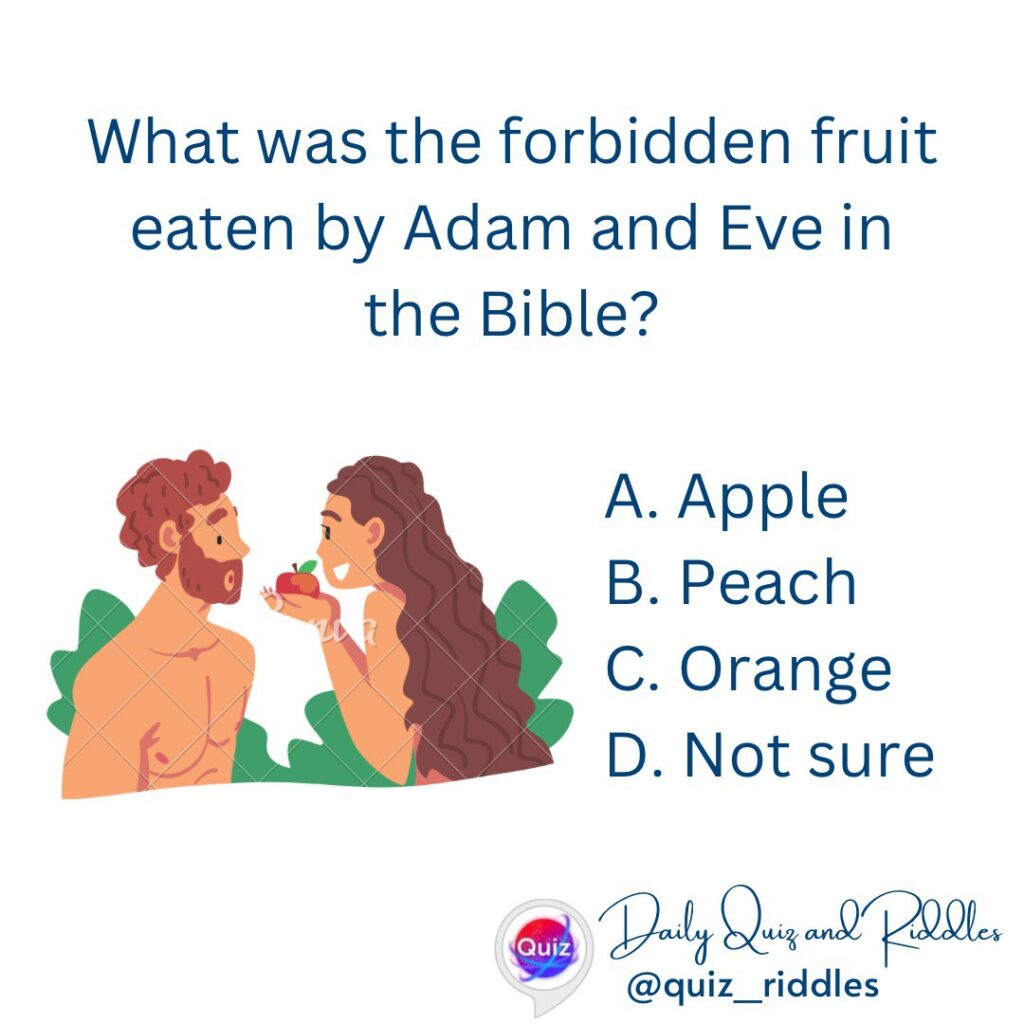Question:
What was the forbidden fruit eaten by Adam and Eve?
Answer:
Not Sure
Explanation
Venturing into the biblical story of Adam and Eve’s encounter with the forbidden fruit, it’s a conundrum that has puzzled generations: What was the identity of this fruit that led to their expulsion from paradise? While many might quickly point to the apple, the truth is, that the Bible doesn’t explicitly reveal the name of the fruit.
The story of the forbidden fruit in the Bible serves as a powerful and symbolic narrative, emphasizing themes of disobedience and the loss of innocence. Yet, it leaves the specific fruit’s identity a mystery. Over the centuries, various fruits have been proposed as possible candidates: pomegranates, mangos, figs, grapes, citrons, carobs, pears, quinces, and even mushrooms. The true fruit’s identity remains elusive.
So, how did the apple come to be associated with this tale? This intriguing twist dates back to at least the 17th century and involves a quirk of the Latin language. The Latin word for apple is “malum,” which just happens to be a homonym for the Latin word for “evil.” It’s a linguistic quirk that sparked the association between the forbidden fruit, which led to the fall of humanity and expulsion from paradise, and the word “malum,” meaning “evil.” Thus, the apple became a compelling candidate to represent this malevolent fruit.
This linguistic connection has persisted through time and contributed to the widespread belief that the forbidden fruit was an apple. However, it’s essential to remember that, in the Holy Scriptures, the actual identity of the fruit remains veiled in mystery.



